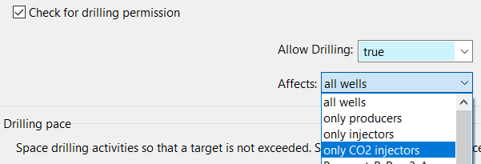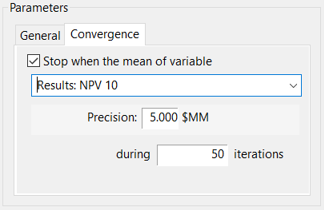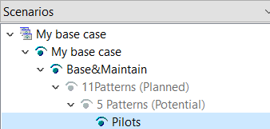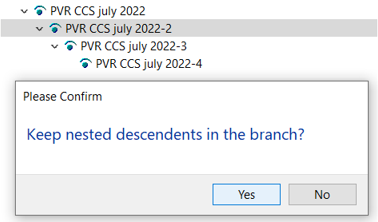PetroVR 2022 v2 Release Notes
PetroVR 2022v2 brings exciting new capabilities to speed up your probabilistic analysis workflows, with automatic convergence now detected for Monte Carlo runs and automated retry on any failed cases, meaning that the results will be there faster than ever for you to analyze. This version also enables significantly expanded modelling scope to now be managed within PetroVR with new elements and functionality added to assist in covering Carbon Capture, Utilization and Storage cases – allowing for both net zero E&P developments, as well as tariff-type business plan evaluations for sequestration of third-party sources.
Modeling Flexibility - Carbon Capture, Utilization and Storage
With the ongoing focus on the Energy Transition and the need to reduce and mitigate greenhouse gas emissions into the atmosphere, new functionality to support the modelling of Carbon Capture, Utilization and Storage (CCUS) has been incorporated into PetroVR 2022v2. Specifically, the new object types and calculation capabilities are designed around making it easy for everyday users to leverage PetroVR’s existing capabilities on modelling uncertainties on cost, timing, efficiency, and infrastructure requirements to integrate CCUS strategies into either their existing projects or new ones.
New CO2 Storage Reservoir: a special type of reservoir accepting volumes from CO2 injection wells, with Storage Total Capacity and Max Injection Rate. Once the storage is full, all injection is halted, and a scheduling event is raised to enable triggering other actions.

New CO2 Injection Well: Specialized CO2 wells capable of injecting volumes in a CO2 storage reservoir. Unlike other wells, its performance is defined using mass units to match to common industry standard inputs.
New CO2 Injection Facility: A new facility type similar to the existing water and gas injection facilities, but accepts only CO2 inputs. The volumes may be sourced as coming both from the field and as emissions generated at other facilities. The facility works internally in mass units but accepts gas volume units fluids from the field.

New mass units for CO2: Emission and injection of CO2 is now defined using mass units (this unit type is called Weight in PetroVR).
New Drilling Control on CO2 Wells: A new option in the Well Scheduler enables a precise control on drilling pace of CO2 Injection wells, to make sure your project reacts to injection requirements as more CO2 is emitted or produced.

New CO2 Runtime Variables: These new variables enable triggering different actions during the simulation:
"Reservoir: name: Run Time: Available Storage" reports the current unused capacity of the storage reservoir
"Reservoir: name: Run Time: Has Available Storage" Boolean variable to detect when the reservoir is filled.
"Pvr: Run Time: CO2: Captured Rate" Project-level CO2 captured for the current step
"Pvr: Run Time: CO2: Released Rate" Project-level CO2 released (captured but not injected).
Plus the corresponding facility and reservoir-level injection variables.
New CO2 related Results: Project and facility level emissions, CO2 injected, and released have been added to results and reports.
Probabilistic Analysis tools
This version adds several powerful options to automate and speed up the running of probabilistic simulations, as well as facilitate the browsing of their results:
Realtime Convergence detection in Monte Carlo: A new Convergence tab in the Monte Carlo control window enables the automatic detection of convergence during a probabilistic run. When convergence is reached, the Monte Carlo run is terminated, skipping still pending iterations and saving on unnecessary calculation time. Results are then presented for the calculated iterations.
To activate Convergence Detection, check the “Stop when the mean of variable” option. Afterwards, select the result to check against, the desired precision and the number of iterations required to declare convergence.
In this example, the Result NPV 10 will be used. If its running mean value oscillates within a margin of +/- 5 $MM during 50 iterations, convergence is reached.

Automatic rerun of undefined Monte Carlo Iterations: Under certain conditions (such as connection problems while querying an EaaS server), some iterations might remain with undefined results. There is a new switch in the PetroVR INI file enabling the automatic rerun of undefined iterations. PetroVR will retry once. If still undefined, you can manually ask for further retries.
To activate this option, include the following switch in the [Technical Switches] section of the INI file:
mcRerunsAutomatically=true
Stochastic Indicators available despite undefined iterations: A new option “Discard undefined” enables calculating stochastic indicators (mean, sd, P10, P50, P90, etc.) even when there are iterations with undefined results.
Incremental Scenario Result against closest active parent: The option to get Incremental results in a Nested Scenario structure now automatically calculates incremental against the closest active parent.
In this example, incrementals for Pilots will be calculated against Base&Maintain, since intermediate nodes are not active.

Enhanced Delete Scenario option in nested structures: When deleting a Scenario with children, a new option enables choosing between also deleting all children or keeping them (becoming children of its parent node).

Scenario Multi-Core Monitor: A Multi-Core monitor detailing Process activities during a multi-core run has been added to the Scenario tool (for those using the Multi-Core Scenario license). The monitor shows the status (active or free) of each process, and the progress of its current task.
Multi-Core available also for Excel Input/Outputs models: Now all models can be run in multi-core mode, including those which concurrently use Excel Inputs and Excel Outputs. They were excluded from multi-core in previous versions.
Integration with other Quorum products
Fluids components exported to Dataflow: The Dataflow export Wizard has been enhanced to include the ability of exporting Fluid Component Production Streams as separated documents in the Dataflow Tree structure.
PetroVR 64 bit
Starting from this release, the main PetroVR installer in our Product Download page is the new 64-bit version of the software. This version enables allocating more memory to PetroVR processes, and therefore can handle much larger projects with thousands of wells or large time spans. Its underlying architecture is also an enabler for future performance enhancements.
A 32-bit version of the release will be also available for download from the same page to support any unexpected backwards compatibility issues that may occur. Note that from PetroVR 2023 onwards, only the 64-bit version will be made available.
Enhancements and tests included in this version
81 enhancements delivered as updates during 2022
663 new functional test cases
